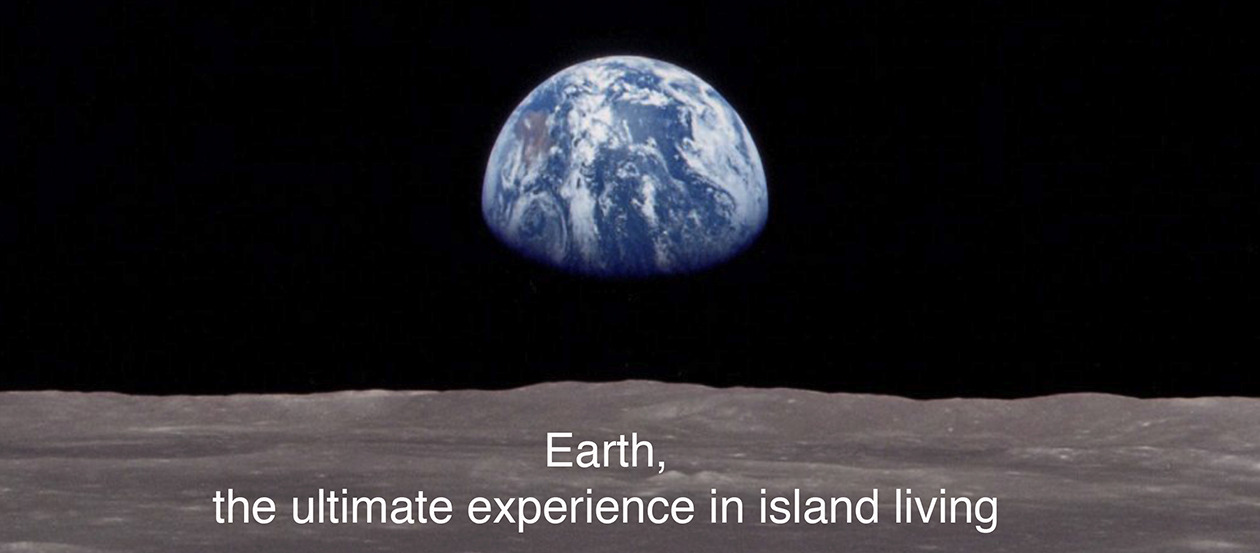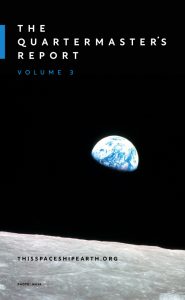This posting is a reposting of an editorial published in JAMA (Journal of the American Medical Association).
The editorial was published in over 200 health journals this past week – that is how seriously the global health community sees this issue.
Just as importantly, the global health community sees the issues as being intertwined which requires a systems based solution.
They recognize that seeing the two topics as separate challenges is “a dangerous mistake.”
Kamran Abbasi; Parveen Ali; Virginia Barbour; Thomas Benfield; Kirsten Bibbins-Domingo; Stephen Hancocks; Richard Horton; Laurie Laybourn-Langton; Robert Mash; Peush Sahni;Wadeia Mohammad Sharief; Paul Yonga; Chris Zielinski
Over 200 health journals call on the United Nations, political leaders, and health professionals to recognize that climate change and biodiversity loss are one indivisible crisis and must be tackled together to preserve health and avoid catastrophe. This overall environmental crisis is now so severe as to be a global health emergency.
The world is currently responding to the climate crisis and the nature crisis as if they were separate challenges. This is a dangerous mistake. The 28th Conference of the Parties (COP) on climate change is about to be held in Dubai while the 16th COP on biodiversity is due to be held in Turkey in 2024. The research communities that provide the evidence for the 2 COPs are unfortunately, largely separate, but they were brought together for a workshop in 2020 when they concluded that “Only by considering climate and biodiversity as parts of the same complex problem…can solutions be developed that avoid maladaptation and maximize the beneficial outcomes.”1
As the health world has recognized with the development of the concept of planetary health, the natural world is made up of one overall interdependent system. Damage to one subsystem can create feedback that damages another—for example, drought, wildfires, floods, and the other effects of rising global temperatures destroy plant life and lead to soil erosion and so inhibit carbon storage, which means more global warming.2 Climate change is set to overtake deforestation and other land-use change as the primary driver of nature loss.3
Nature has a remarkable power to restore. For example, deforested land can revert to forest through natural regeneration, and marine phytoplankton, which act as natural carbon stores, turn over 1 billion tons of photosynthesizing biomass every 8 days.4 Indigenous land and sea management has a particularly important role to play in regeneration and continuing care.5
Restoring one subsystem can help another—for example, replenishing soil could help remove greenhouse gases from the atmosphere on a vast scale.6 But actions that may benefit one subsystem can harm another—for example, planting forests with one type of tree can remove carbon dioxide from the air but can damage the biodiversity that is fundamental to healthy ecosystems.7
The Impacts on Health
Human health is damaged directly by both the climate crisis, as the journals have described in previous editorials,8,9 and by the nature crisis.10 This indivisible planetary crisis will have major effects on health as a result of the disruption of social and economic systems—shortages of land, shelter, food, and water, exacerbating poverty, which in turn will lead to mass migration and conflict.
Rising temperatures, extreme weather events, air pollution, and the spread of infectious diseases are some of the major health threats exacerbated by climate change.11 “Without nature, we have nothing,” was UN Secretary-General António Guterres’ blunt summary at the biodiversity COP in Montreal last year.12 Even if we could keep global warming below an increase of 1.5 °C over preindustrial levels, we could still cause catastrophic harm to health by destroying nature.
Access to clean water is fundamental to human health, and yet pollution has damaged water quality, causing a rise in water-borne diseases.13 Contamination of water on land can also have far-reaching effects on distant ecosystems when that water runs off into the ocean.14 Good nutrition is underpinned by diversity in the variety of foods, but there has been a striking loss of genetic diversity in the food system. Globally, about a fifth of people rely on wild species for food and their livelihoods.15 Declines in wildlife are a major challenge for these populations, particularly in low- and middle-income countries. Fish provide more than half of dietary protein in many African, South Asian, and small island nations, but ocean acidification has reduced the quality and quantity of seafood.16
Changes in land use have forced tens of thousands of species into closer contact, increasing the exchange of pathogens and the emergence of new diseases and pandemics.17 People losing contact with the natural environment and the declining loss in biodiversity have both been linked to increases in noncommunicable, autoimmune, and inflammatory diseases and metabolic, allergic, and neuropsychiatric disorders.10,18 For Indigenous people, caring for and connecting with nature is especially important for their health.19 Nature has also been an important source of medicines, and thus reduced diversity also constrains the discovery of new medicines.
Communities are healthier if they have access to high-quality green spaces that help filter air pollution, reduce air and ground temperatures, and provide opportunities for physical activity.20
Connection with nature reduces stress, loneliness, and depression while promoting socialinteraction.21 These benefits are threatened by the continuing rise in urbanization.22 Finally, the health impacts of climate change and biodiversity loss will be experienced unequally between and within countries, with the most vulnerable communities often bearing the highest burden.10Linked to this, inequality is also arguably fueling these environmental crises. Environmental challenges and social/health inequities are challenges that share drivers and there are potential co-benefits of addressing them.10
A Global Health Emergency
In December 2022 the biodiversity COP agreed on the effective conservation and management of at least 30% of the world’s land, coastal areas, and oceans by 2030.23 Industrialized countries agreed to mobilize $30 billion per year to support developing nations to do so.23 These agreements echo promises made at climate COPs.
Yet many commitments made at COPs have not been met. This has allowed ecosystems to be pushed further to the brink, greatly increasing the risk of arriving at “tipping points,” abrupt breakdowns in the functioning of nature.2,24 If these events were to occur, the impacts on health would be globally catastrophic.
This risk, combined with the severe impacts on health already occurring, means that the World Health Organization should declare the indivisible climate and nature crisis as a global health emergency. The 3 preconditions for WHO to declare a situation to be a Public Health Emergency of International Concern25 are that it (1) is serious, sudden, unusual, or unexpected; (2) carries implications for public health beyond the affected State’s national border; and (3) may require immediate international action. Climate change would appear to fulfill all of those conditions. While the accelerating climate change and loss of biodiversity are not sudden or unexpected, they are certainly, serious and unusual. Hence we call for WHO to make this declaration before or at the 77thWorld Health Assembly in May 2024.
Tackling this emergency requires the COP processes to be harmonized. As a first step, the respective conventions must push for better integration of national climate plans with biodiversity equivalents.3As the 2020 workshop that brought climate and nature scientists together concluded, “Critical leverage points include exploring alternative visions of good quality of life, rethinking consumption and waste, shifting values related to the human-nature relationship, reducing inequalities, and promoting education and learning.”1 All of these would benefit health.
Health professionals must be powerful advocates for both restoring biodiversity and tackling climate change for the good of health. Political leaders must recognize both the severe threats to health from the planetary crisis as well as the benefits that can flow to health from tackling the crisis.26 But first, we must recognize the crisis for what it is: a global health emergency.
ARTICLE INFORMATION
Published: October 25, 2023. doi:10.1001/jamanetworkopen.2023.44081
Open Access: This is an open access article distributed under the terms of the CC-BY License.©2023 Abbasi Ket al. JAMA Network Open.
Corresponding Author: Chris Zielinski, University of Winchester (czielinski@ippnw.org).
Author Affiliations: Editor-in-Chief, BMJ (Abbasi); Editor-in-Chief, International Nursing Review (Ali); Editor-in-Chief, Medical Journal of Australia (Barbour); Editor-in-Chief, Danish Medical Journal (Benfield); Editor-in-Chief,JAMA (Bibbins-Domingo); Editor-in-Chief, British Dental Journal (Hancocks); Editor-in-Chief, The Lancet (Horton); University of Exeter, UK (Laybourn-Langton); Editor-in-Chief, African Journal of Primary Health Care & Family Medicine (Mash); Editor-in-Chief, National Medical Journal of India (Sahni); Editor-in-Chief, Dubai Medical Journal (Sharief); Editor-in-Chief, East African Medical Journal (Yonga); University of Winchester, UK (Zielinski).
Conflict of Interest Disclosures: Dr Benfield reported that his institution received funds from Novo Nordisk, Simonsen Foundation, Lundbeck Foundation, Kai Foundation, Eric and Susanna Olesen’s Charitable Fund, GSK, Pfizer, Gilead Sciences, and MSD; he received funding to conduct trials for Pfizer, Boehringer Ingelheim, Gilead Sciences, MSD, Roche, Novartis, and Kancera; served on an advisory board for GSK, Pfizer, Gilead Sciences, MSD,Pentabase, Janssen, and AstraZeneca; received consulting fees from GSK and Pfizer; received payment for lectures from GSK, Pfizer, Gilead Sciences, Boehringer Ingelheim, AbbVie, and AstraZeneca; and received trial medication from Eli Lilly. Dr Hancocks reported receiving compensation for hosting webinars from Procter & Gamble. Dr Mash reported receiving a grant from VLIR (Belgium) to study primary health care and climate change in Africa. Dr Yonga reported serving as a principal investigator for a COVID-19 antiviral for Atea Pharmaceuticals; receiving honoraria for lectures, presentations, and educational events from bioMerieux and Pfizer; serving on an advisory board for Pfizer and NHLBI; and serving on committees or panels for the European Society of Clinical Microbiology and Infectious Diseases. No other disclosures were reported.
Note: This Editorial is being published simultaneously in multiple journals. For the full list of journals see https://www.bmj.com/content/full-list-authors-and-signatories-climate-nature-emergency-editorial-october-2023.
REFERENCES
- Otto-Portner H, Scholes B, Agard J, et al. Scientific outcome of the IPBES-IPCC co-sponsored workshop on biodiversity and climate change. June 2021. doi:10.5281/zenodo.4659159
- RippleWJ,Wolf C, Lenton TM, et al. Many risky feedback loops amplify the need for climate action. One Earth.2023;6:86-91. doi:10.1016/j.oneear.2023.01.004
- European Academies Science Advisory Council. KeyMessages from European Science Academies for UNFCCC COP26 and CBD COP15. August 2021. Accessed October 1, 2023. https://easac.eu/publications/details/keymessages-from-european-science-academies-for-unfccc-cop26-and-cbd-cop15
- Falkowski P. Ocean science: the power of plankton. Nature. 2012;483:S17-S20. doi:10.1038/483S17a
- Dawson N, Coolsaet B, Sterling E, et al. The role of Indigenous peoples and local communities in effective and equitable conservation. Ecol Soc. 2021;26. doi:10.5751/ES-12625-260319
- Bossio DA, Cook-Patton SC, Ellis PW, et al. The role of soil carbon in natural climate solutions. Nat Sustain. 2020;3:391-398. doi:10.1038/s41893-020-0491-z
- Levia DF, Creed IF, Hannah DM, et al. Homogenization of the terrestrial water cycle. Nat Geosci. 2020;13: 656-658. doi:10.1038/s41561-020-0641-y
- Atwoli L, Baqui AH, Benfield T, et al. Call for emergency action to limit global temperature increases, restore biodiversity, and protect health. BMJ. 2021;374:n1734. doi:10.1136/bmj.n1734
- Atwoli L, Erhabor GE, Gbakima AA, et al. COP27 climate change conference: urgent action needed for Africa and the world. BMJ. 2022;379:o2459. doi:10.1136/bmj.o2459
10 WHO, UNEP, Convention on Biological Diversity. Connecting Global Priorities: Biodiversity and Human Health: A State of Knowledge Review. 2015. Accessed October 1, 2023. https://www.cbd.int/health/SOKbiodiversity-en.pdf
- Magnano San Lio R, Favara G, Maugeri A, Barchitta M, Agodi A. How antimicrobial resistance is linked to climate change: an overview of two intertwined global challenges. Int J Environ Res Public Health. 2023;20(3):1681. doi:
- Jelskov U. “Without nature, we have nothing”: UN chief sounds alarm at key UN biodiversity event. UN News.December 6, 2022. Accessed October 1, 2023. https://news.un.org/en/story/2022/12/1131422
- World Health Organization. State of the world’s drinking water: an urgent call to action to accelerate progress on ensuring safe drinking water for all. October 2022. Accessed October 1, 2023. https://www.who.int/publications/i/item/9789240060807
- Comeros-Raynal MT, Brodie J, Bainbridge Z, et al. Catchment to sea connection: impacts of terrestrial run-off on benthic ecosystems in American Samoa. Mar Pollut Bull. 2021;169:112530. doi:10.1016/j.marpolbul.2021.112530
- IPBES. Assessment report on the sustainable use of wild species. August 2022. https://www.ipbes.net/sustainable-use-assessment
- Falkenberg LJ, Bellerby RGJ, Connell SD, et al. Ocean acidification and human health. Int J Environ Res Public Health. 2020;17(12):4563. doi:10.3390/ijerph17124563
- Dunne D. Climate change “already” raising risk of virus spread between mammals. April 28, 2022. AccessedOctober 1, 2023. https://www.carbonbrief.org/climate-change-already-raising-risk-of-virus-spread-betweenmammals/
- Altveş S, Yildiz HK, Vural HC. Interaction of the microbiota with the human body in health and diseases. Biosci Microbiota Food Health. 2020;39(2):23-32. doi:10.12938/bmfh.19-023
- Schultz R, Cairney S. Caring for country and the health of Aboriginal and Torres Strait Islander Australians. Med J Aust. 2017;207(1):8-10. doi:10.5694/mja16.00687
- Macguire F, Mulcahy E, Rossington B. The Lancet Countdown on Health and Climate Change: policy brief forthe UK. 2022. Accessed October 1, 2023. https://s41874.pcdn.co/wp-content/uploads/Lancet-Countdown-2022-UK-Policy-Brief_EN.pdf
- Wong FY, Yang L, Yuen JWM, Chang KKP,Wong FKY. Assessing quality of life using WHOQOL-BREF: a crosssectional
study on the association between quality of life and neighborhood environmental satisfaction, and the mediating effect of health-related behaviors. BMC Public Health. 2018;18(1):1113. doi:10.1186/s12889-018-5942-3
- Simkin RD, Seto KC, McDonald RI, JetzW. Biodiversity impacts and conservation implications of urban land expansion projected to 2050. Proc Natl Acad Sci U S A. 2022;119(12):e2117297119. doi:10.1073/pnas.2117297119
- Secretariat of the Convention on Biological Diversity. COP15: Nations Adopt Four Goals, 23 Targets for 2030 In Landmark UN Biodiversity Agreement. December 12, 2022. Accessed October 1, 2023. https://www.cbd.int/article/ cop15-cbd-press-release-final-19dec2022
- Armstrong McKay DI, Staal A, Abrams JF, et al. Exceeding 1.5°C global warming could trigger multiple climate tipping points. Science. 2022;377(6611):eabn7950. doi:10.1126/science.abn7950
- WHO guidance for the use of Annex 2 of the International Health Regulations. 2005.World Health Organization. Accessed October 1, 2023. https://www.who.int/publications/m/item/who-guidance-for-the-use-ofannex-2-of-the-international-health-regulations-(2005)
- Australian Government Department of Health and Aged Care. Consultation on Australia’s first National Health and Climate Strategy. July 26, 2023. Accessed October 1, 2023. https://www.health.gov.au/news/consultation-onaustralias-first-national-health-and-climate-strategy
JAMANetwork Open | Editorial Treating Climate and Nature Crisis as a Global Health Emergency
JAMA Network Open. 2023;6(10):e2344081. doi:10.1001/jamanetworkopen.2023.44081 (Reprinted) October 25, 2023 4/4
Downloaded From: https://jamanetwork.com/ on 10/29/2023
Open Access. This is an open access article distributed under the terms of the CC-BY License.



